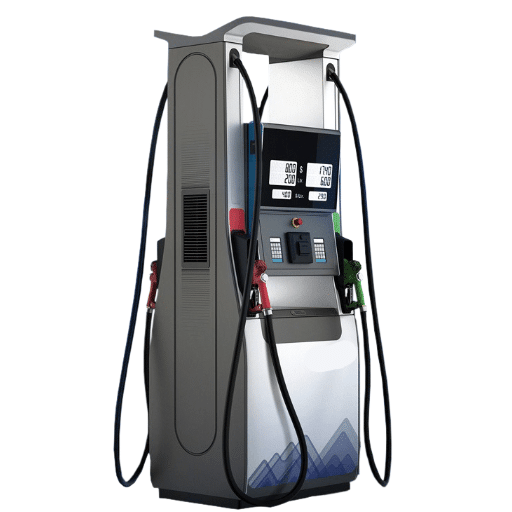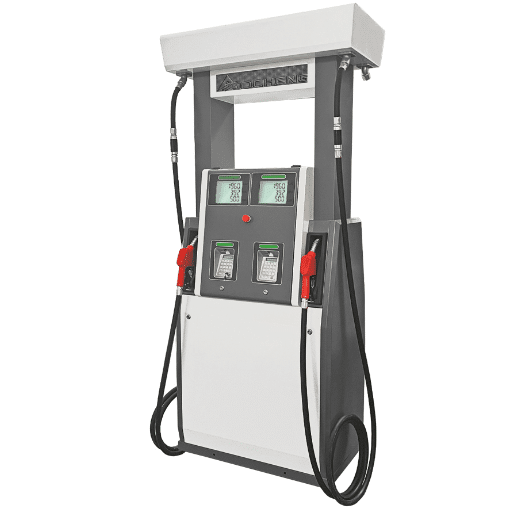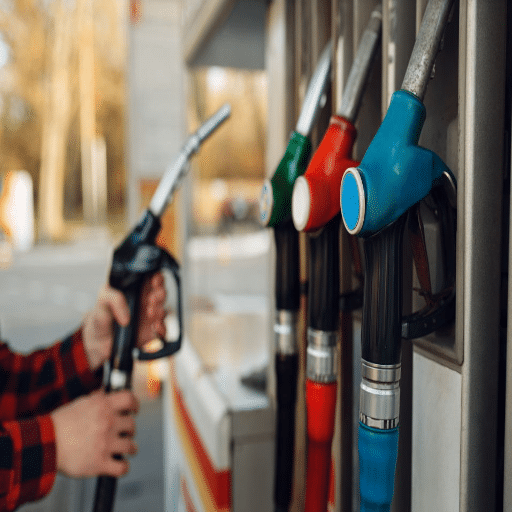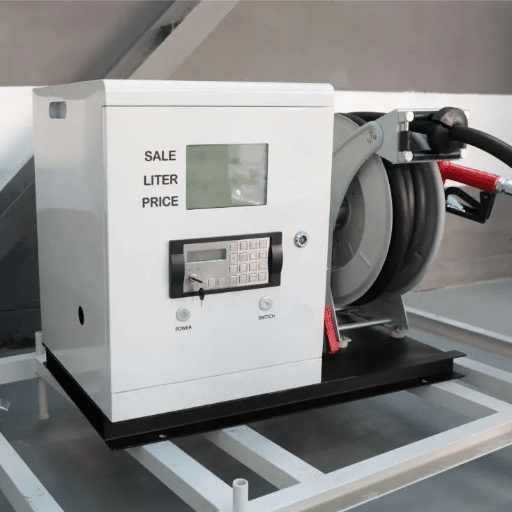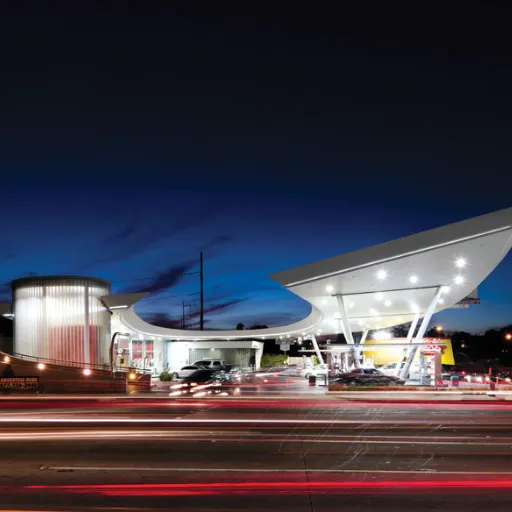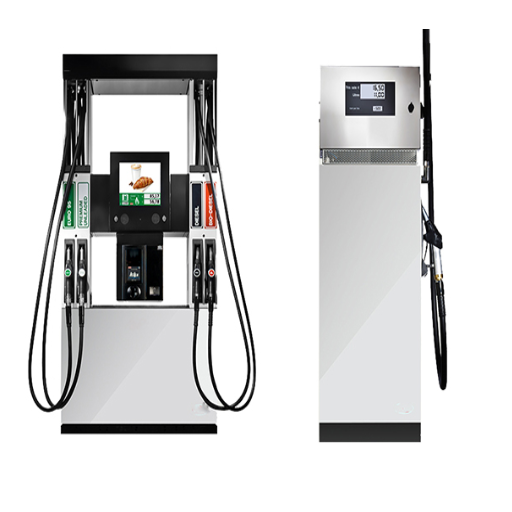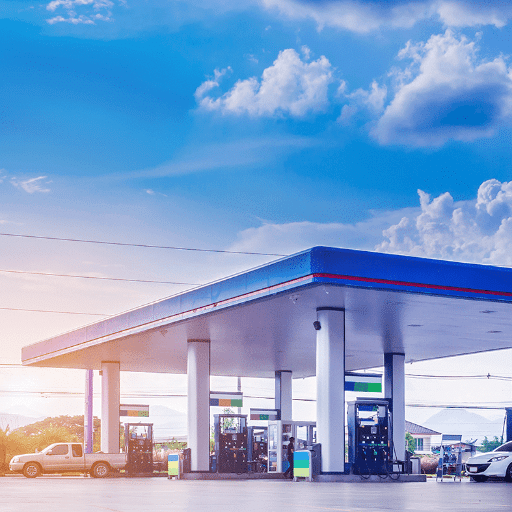The true profit margins for service stations may come as a surprise to many. While consumers may often be amazed by the ever-fluctuating prices of gasoline, the profit earned by the gas station for each gallon sold is but a very small share of the entire price. On the subject of hidden economics in gasoline sales, this piece sets out to give the breakdown of where your money goes and to explain how gas stations work on razor-thin margins. Armed with this knowledge, you will be more enlightened about the kinds of pressures gas stations are under, why prices vary, and what truly influences their profit margin. Come with us as we work our way through the numbers and working dynamics behind every gallon you put in your tank.
Understanding Gas Station Profit Margins
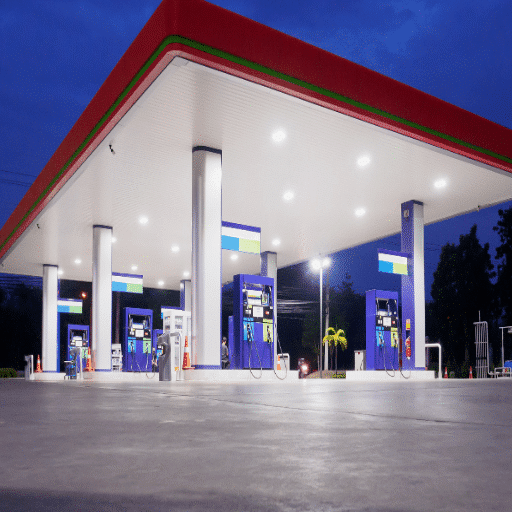
At a gas station, profit margins are unfortunately quite slim. On average, after fees for wholesale fuel, shipment, credit card processing, utilities, and labor, gas stations only earn a few cents per gallon of gasoline sold. The big money comes in sales other than fuel-the convenience stores sell everything: from snack products to cold beverages. These extra sales support meager profits from fuel. Changes in gas prices arise from different causes such as crude oil prices, refinery costs, and taxes. Nevertheless, the station owners have almost zero control over these causes. So, efficient operation and establishing alternate revenue streams are very important for profitability.
Definition of Profit Margin in Fuel Retailing
Profit margin in fuel retailing measures the percentage of revenue that remains as profit after expenses have been met with regard to the operations about fuel sales. These expenses encompass fuel purchase costs, transportation charges, credit card processing fees, utilities, labor costs, rent, etc. With respect to fuel retail, normally, profit margins are very thin. For example, analyzing gasoline prices in the United States recently, the average gross margin on sales stood at only 10 to 15 cents per gallon. This figure may decrease drastically due to expenses, with net profits ranging anywhere from 1 to 3 cents per gallon.
Such a thin margin really makes fuel retailers rely heavily on secondary sources of income, such as convenience stores, car washes, or agreements with other food and beverage franchises, to keep their entirety profitable. Looking at it through the data lens, in many cases, non-fuel sales yield higher profit margins than fuel sales, with convenience store items providing a margin of 30% or even more. Externally driven variables such as crude oil prices, geopolitical events, refinery processes, and taxes influence fuel prices and may cause huge revenue fluctuations. Hence, diversification in business is going to keep fuel retailers happy with profit levels amidst all of these challenges.
Factors Influencing Profit Margins
Fuel prices fluctuate heavily, influenced by the crude oil market worldwide, geopolitical tensions, and supply chain disruptions. From data until October 2023, considering production cuts and economic policies of big oil-producing nations, the average price of Brent crude oil mostly oscillated in the range between $80 and $90 per barrel. Such swings affect market margins, whereby the cost of procurement rises and falls unpredictably.
Retail fuel prices depend greatly on the competitor setting of a region. For example, in areas where there’s a competition of numerous gas stations with a small consumer base, one usually witnesses thinner margins as a result of price wars. By contrast, areas with very limited competition allow more leeway in extra margins to retailers.
Profits or losses are highly influenced by costs like labor, electricity, or maintenance. According to the latest industry studies, labor costs largely increased by 5% in a year, mainly because of inflation and increased minimum wage requirements in several states. Besides, the costs of operating and maintaining fuel pump technology, along with convenience stores, contribute to the overheads.
Excise taxes, environmental regulations, and local surcharges all impact a fuel price and a retailer’s margin. Some states in the U.S., for example, impose additional taxes between $0.30 and $0.60 per gallon, which does affect the net margin for fuel retailers immensely. On the other hand, policies at the federal level to encourage alternative energy and electric vehicle development, on the demand for traditional fuels will certainly have a long-term effect.
High foot traffic periods-and these include summer vacations and the winter holiday travel season-enhance demand, thereby allowing retailers to increase margins. Yet, off-peak seasons tend to affect sales, much like those that lean largely on fuel sales.
Profits now increasingly depend on non-fuel revenues like convenience stores, car washes, and food services. According to the latest data, such sales from convenience stores can account for up to 60% of the total profit for many gas stations, with snacks and beverages showing margins of over 30%.
Familiarity with and adjustments to these variables will help a fuel retailer to tackle issues and devise a strong, well-balanced strategy for sustained profit margins.
Comparison with Other Retail Sectors
| Retail Sector | Profit Margins | Key Characteristics | Revenue Strategy |
|---|---|---|---|
| Gas Stations | 1-3% (fuel), 30%+ (convenience) | High turnover, location-dependent | Diversified offerings |
| Grocery Stores | 1-3% | Volume-based, competitive | Economies of scale |
| Department Stores | 8-15% | Inventory diversity | Brand positioning |
| Car Washes | 40-60% | Service-based, recurring | Premium services |
When set against other retail sectors, the gas station business model remains unique as it heavily chains fuel sales with secondary profit streams like convenience merchandise. For example, the profit margins on gas station convenience store items typically eclipse those encountered in traditional supermarkets. Industry sources further enlighten us that while grocery store profit margins typically fall between 1% and 3%, a gas station convenience store can achieve margins of as high as 30% on products like chips and soda.
Along similar lines, giant box retail or department stores sustain revenues through economies of scale and diversification of inventory. Conversely, gas stations stay with narrower diversification but higher turns on a few key products, which are supplemented with services such as car washes or quick-service restaurants. For example, car washes alone offer such high profits that revenues of up to $70,000 per car wash, per location, were being reported.
This reliance on ancillary revenue streams has helped gas stations maintain their competitiveness against major changes in consumer behavior, such as how e-commerce has affected the traditional retail store. Otherwise, the apparel stores have seen huge sales declines at the brick-and-mortar stores, along with the online shopping trend. Being tied to physical locations for the on-the-go essential products, gas stations are almost insulated from this trend. The ability to shift and diversify revenue streams is what sets gas stations apart within the bigger retail industry.
Average Profit Per Gallon of Gasoline
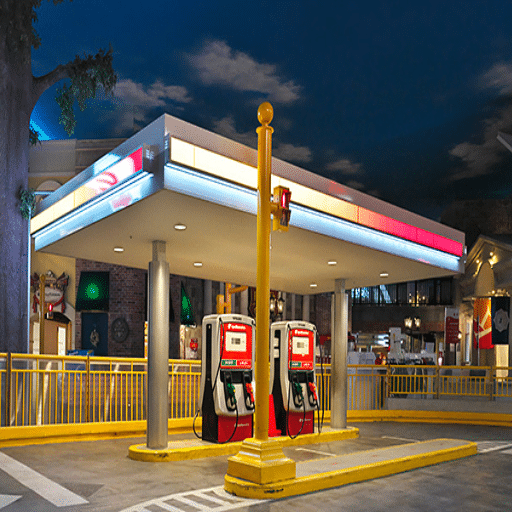
It’s rather slim, with an average profit margin for gasoline at some point between $0.05 and $0.10 per gallon at the retailer level. This is the gross profit after paying for the wholesaler’s fuel, excluding other costs such as rent, labor, or electricity bills. With this slim margin, the gas station counters depend on the uplift of the complementary sales of convenience store items.
Calculating Average Profit Per Gallon
The profit earned on the sale of gas varies. It depends on the factors of wholesale price, taxes, and additional overheads. The latest data sets federal excise tax at $0.184 per gallon, while state taxes vary widely, with an average of around $0.39 per gallon across the United States. The gross profit margin for gas stations is basically the price at which it is sold minus the sum of the wholesale price and all these costs, like taxes, that change with crude oil prices and market conditions.
Example Calculation:
- Retail Price: $3.50 per gallon
- Wholesale Price + Taxes: $3.40 per gallon
- Gross Profit Margin: $0.10 per gallon
However, this usually doesn’t give us much idea about whether the retailer is really making money, since other operational costs, such as wages, rent, and utilities, as well as credit card transaction fees, will diminish the profits significantly. These small profits on gas are made up through sales generated inside the store, where gross margins are much higher than on fuel.
Current Trends in Gas Prices
Today, crude gasoline is bought and sold amid strong fluctuations. This power is reflected by several forces: geopolitical events, global crude oil production, and seasonal demand fluctuations. By the end of 2023, the national average price of gasoline in the U.S. hovered around $3.80, but with differences across states due to different state taxes, proximity to adjoining refining hubs, etc. For example, states like California must endure prices of about $5.00 because of stringent environmental laws and taxes, whereas states like Texas benefit from lower prices, generally falling below the national average because of local oil production.
At the world level, some major factors leading to high prices are higher crude oil prices. More uncertainty around supply expectations resulted from ongoing talks between OPEC+ members about potential production cuts. Alongside these, supply chains have also been affected due to capacity constraints after scheduled maintenance and unplanned disruptions. On the demand side, periods of increased travel, especially during holidays, usually see short-term spikes in fuel prices. Such patterns show us an extremely interrelated marketplace where even a slight discrepancy made in production or consumption will generate noticeable changes at the pump.
Impact of Gas Prices on Profit Margins
The highs and lows of gas prices are so influential that they shape the profit margins of several industries, especially those that heavily utilize transportation or logistics. For example, fuel can constitute 20 to 30 percent of total trucking expenses. When prices of fuel are high, transportation costs shoot up, and companies must either eat the losses, therefore dropping their profitability, or they have to pass the extra costs to the consumer and thus face the risk of vanishing demand.
Again, with rising fuel prices, agriculture and manufacturing exert undue strain. The rising transportation costs of raw materials and finished goods correspondingly raise production costs unless these expenses are borne through strategic price management schemes; this acts against profit margins. Recent insight into the matter notes that, with an increase of $0.50 per gallon in fuel prices, companies intermediate in size, in these sectors-upwards of millions of dollars in extra expenses can be incurred in a year.
Retail prices, to a certain extent, are more sensitive to fuel prices compared with shifts in price levels of other factors, which can indirectly influence consumer behavior. Higher transportation and logistics costs due to high fuel prices are an increase in inflation; this reduces consumer buying power, which simultaneously affects sales volume. Therefore, the effect on profit margins is wider.
Airlines, for instance, constitute yet another very glaring example of gas prices significantly influencing business operations. A major portion of airline operating costs goes into jet fuel, which is a derivative of crude oil. They usually raise fuel surcharges on their tickets or hedge to cover the costs arising from increasing fuel prices, but long-term profitability can often be undermined when fuel prices remain high for an extended period.
In general, gas prices have an unprecedented capacity to send ripple effects across almost every sector, necessitating sound planning and mitigation strategies to maintain stability and ensure sustainable profit margins.
Profit Margins for Station Owners
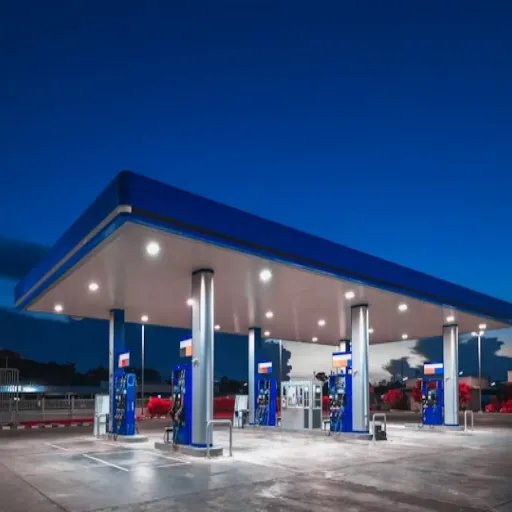
Operators have very slim margins on profits, as most of the revenues are really from the convenience store sales, not from the fuel itself. In this sense, gas sales become almost a promotion in bringing customers in, with real profits hardly ever being made per gallon, while wholesale prices vary and competition always lurks. Station owners seek to boost profits through the sale of higher-margin items such as snacks, beverages, and sundry items. Keeping their prices competitive, apart from the fuel, is how they sustain their profit margins.
Fixed vs. Variable Costs
An understanding of fixed and variable costs is imperative for managing a gas station business profitably. These costs differ greatly and can make or break the business. Fixed costs incur expenses that stay stable irrespective of sales volume. As to fixed costs considered by a gas station owner, it might be rent or mortgage payment, property tax, insurance, and certain utilities, such as electricity for lighting and fuel pumps. For example, rent for gas stations in the United States ranges from $2,000 to $6,500 monthly, depending on location and size.
Variable costs, on the other hand, will vary according to the amount of sales or the level of activity. Examples of variable costs include the wholesale price of fuel, credit card processing fees, and inventory costs of the convenience store. To cite one instance, the more fuel or store sales there are, the more credit card charges there will be, averaging about 2-3% of each transaction’s value. Another occurrence may consist of fuel prices being extremely volatile, as wholesale gasoline prices, more often than not, end up being dictated by the crude oil price, refinery production, and transportation costs.
One must strike a balance between these costs at all expenses to remain profitable. Fixed costs represent a gross cost on which you can set your profit margin, whereas variable costs need a thorough and continuous analysis to maximize the net profit. This is why gas stations monitor the wholesale price of fuel and non-fuel pricing consciously as a counterweight to these fluctuating costs.
Strategies for Maximizing Profit
Allow the fluctuations in fuel pricing to attract customer interest through real-time adjustments. Using tools and data that track relevant regional demand trends, gas stations can compete by setting profitable yet competitive price points within local market conditions.
Despite fuel sales being the main act, non-fuel sales occupy a substantial place in revenue generation. Research has just indicated that more than 50% of the revenue for convenience stores inside gas stations comes from non-fuel sales; snack items such as chips, soft drinks, and prepared foods lead the charge.
Prioritize energy efficiency in your infrastructure. Switching to LED lighting and embarking on preventive maintenance for pumps may significantly cut down on utility expenditures. Meanwhile, green fuels like EV charging areas would greatly broaden the customer’s targeting field, giving the business a green standing among the growing preference of consumers for sustainable energy solutions.
Excellent customer service from any gas station facilitates customer retention and customer repeat visits. Thus, giving incentives to customers through loyalty programs, discounts through mobile apps, or touchless payments would also add convenience and engagement for an increasingly tech-savvy consumer base that will drive profits through fuel and non-fuel outlets alike.
Case Studies of Successful Gas Stations
Chevron: Energy Transition Company
Chevron has done well in integrating renewable energy solutions into its operations. The strategic placement of the EV charging stations at a few locations will encourage the adoption of electric vehicles. Thus, it is a competent example of how Chevron dynamically adapts to industry trends. Also, alliances with advanced producers of biofuels have supported the commitment to reduce carbon emissions. A 2022 report declared that Chevron invested over $10 billion in lower-carbon energy projects, which demonstrates the alignment of the company towards sustainable means and its demands from consumers.
Kwik Trip: Customer First
A family-owned chain with long roots in the Midwest, Kwik Trip distinctively combines customer service and convenience. They provide an array of fresh food choices and maintain clean and well-maintained facilities to give a pleasant stop to travellers. To remain in the customers’ view, it created a rewarding program, Kwik Rewards, and achieved success in building loyalty and repeat visits. The National Association of Convenience Stores report indicates that 40 percent of Kwik Trip’s total revenue comes from food and beverage sales, showing that diversification matters.
Shell: Technological Innovations
Shell has been explored and recognized for applying technologies to enhance customer experiences and improve operational efficiencies. Its mobile app allows customers to locate nearby stations, make payments for fuel, and even receive discounts, allowing it to meet the needs of a tech-aware population. With AI/ML, Shell has enhanced methods to forecast customer demand and effectively manage inventory. Another 2023 study found that these initiatives brought down the operating costs substantially while increasing customer satisfaction ratings in key markets.
BP’s Sustainability and Community Engagements
A British multinational oil company, BP, has made considerable achievements in the sphere of sustainability within its long-term strategy. Setting targets to become a net-zero company by 2050, BP invested heavily in renewable energy projects-for instance, solar and wind energy. Moreover, BP demonstrates community engagement by sponsoring local projects and education programs that help build goodwill among customers. Recent performance metrics showed a 25% increase in customer loyalty at those gas stations where community programs were overtly promoted.
These case studies bring home the fact that innovations, sustainability, and customer-centered approaches have become the major growth engines for gas stations in a rapidly changing industry.
Challenges Faced by Fuel Retailers
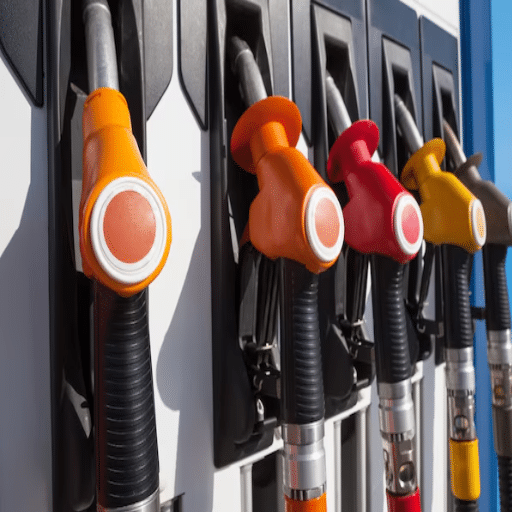
Fuel retailers have several complex challenges hampering today’s market. For one, the bigger picture is the rise in electric vehicles that reduces reliance on traditional fuel. Then again, oil price fluctuations and economic instabilities across the world create pricing pressure and hence affect profitability. They also have to consider the increased demand for sustainable and green ways-which means that they have to invest in renewable energy infrastructure. Thus, a few alternative fuels providers compete with them, while changing customer expectations for convenient, tech-driven services add to a complex picture of conducting a successful business in this sector.
Market Competition and Pricing Pressure
The fuel and energy retail sector faces stiff competition, with pricing being one of the main arenas of contest. Global crude oil price fluctuations, geopolitical unrest, and supply chain crunches greatly hinder, sometimes resulting in volatile fuel prices. It is reported, for example, how crude oil prices have been stuck on an upward trend for more than 10% in recent months owing to simultaneous pressure from supply cuts by several key oil-producing countries and burgeoning demand on the global front.
Electric Vehicle Adoption
These retailers also face competition from alternative energy options, such as EV charging stations, which are rapidly scaling and drawing consumer acceptance. The fast growth of the EV market, with global electric vehicle sales crossing 10 million units in 2022, representing a 55% year-on-year increase, has encouraged traditional fuel sellers to expand their business to include EV charging infrastructure, thereby stepping up competition in an already vibrant market.
Regulatory Compliance
Regulatory sequences shape the profit margin of fuel and energy retailers. Government policies, including fuel taxation, environmental compliance mandates, or energy price capping, determine operational costs and subsequent pricing strategy. For example, if the tax on carbon emissions is kept high, then the profit margin would be knocked out for the retailers; either they have to bear these additional costs themselves, or increase prices for consumers, which in turn may lower demand.
Economic Volatility
Consumer behavior is another factor affecting the sales of gasoline. Inflation rates and wage growth in an economy determine how much of their disposable income families will spend. In times of economic uncertainty and rising inflation, consumers cut short the use of vehicles, resort to public transport, or purchase fuel-efficient vehicles as a cost-saving strategy.
Economic Influences on Gasoline Sales
Gasoline sales are largely influenced by different economic factors, including crude oil prices, supply chain logistics, and international demand trends. A major factor affecting gasoline sales is the fluctuation in crude oil prices. For instance, crude oil prices have recently fluctuated immensely due to geopolitical tension, changes in production quotas by entities such as OPEC, and supply disruptions owing to environmental causes such as hurricanes.
Consumer behavior is another factor affecting the sales of gasoline. Inflation rates and wage growth in an economy determine how much of their disposable income families will spend. In times of economic uncertainty and rising inflation, consumers cut short the use of vehicles, resort to public transport, or purchase fuel-efficient vehicles as a cost-saving strategy. Further, in some markets, declining demands for gasoline have started as estimates now show an increasing trend of consumers opting for electric vehicles, with global sales of EVs being up by nearly 35% just last year.
Also, differently placed government regulations and taxes directly hit the price of gasoline and, hence, sales. Those countries that offer carbon taxes or something similar as subsidies on conventional energy resources evidently show a decline in the reliance on gasoline. It is said that some regions report that the imposition of higher fuel taxes has triggered gasoline consumption to fall by about 10% over the past five years, coupled with an ongoing shift in the direction of sustainable energy options.
Next comes the factor of an increase in offensive infrastructure and technologies, which further shape the gasoline sales trends. The increased number of EV charging stations, combined with ongoing investments in renewable energy, adds more fuel to the transformation story, which can grow even faster within the next decade, thereby highlighting the urgent need for adaptability from within the conventional energy fraternity.
Future Outlook for Gas Station Profitability
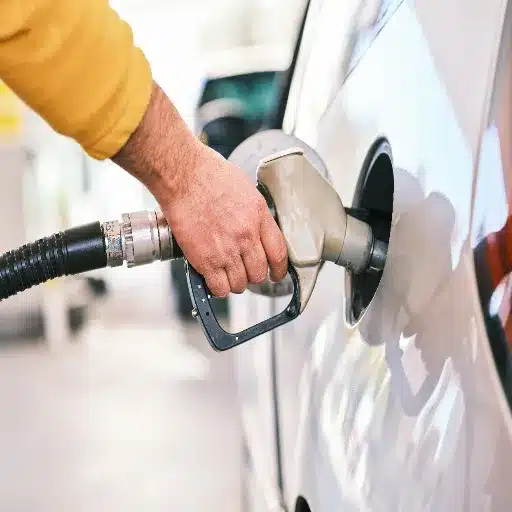
Prohibitively high-level obstacles await gas station profitability through greater conversion to lifestyle electric vehicles and renewable energies. Yet, opportunities exist for stations that broaden their scope of offerings. For the income side, stations can consider investing in EV charging facilities, upscale convenience stores, and ancillary sales such as food-service revenue. Survival demands thus include a change in consumer demands as well as shifts in energy trends.
Predictions for Gas Prices and Margins
Ups and downs in gas prices are expected for the next few years, with fluctuating crude oil markets acting as a primary factor, in addition to geopolitical tension or global transition towards cleaner energy. Analysts foresee price spikes in the short term and gradual stabilization as oil production adjusts to changed demand. Since consumers will start using less fuel due to the increasing adoption of electric vehicles, margins for gasoline retailers will likely get squeezed. Nonetheless, by going into different revenue streams such as EV charge stations and premium services, these challenges could be offset, and hence support profitability in the long term.
Emerging Trends in the Fuel Retail Market
From my perspective, one of the major trends in the fuel retail market is the movement toward sustainability and diversification. As EVs and cleaner energies are being pushed by the rest of the world, so do the traditional fuel retailers invest more in EV charging infrastructure and green initiatives. Although some changes are still projected, emphasis is placed on customer experiences with premium services, upgrades to convenience stores, and loyalty programs. Being able to adapt to changes will certainly allow one to keep fit in this industry while also assuring long-term growth.
Adaptation Strategies for Gas Station Owners
Owners of gas stations must expand their offerings by installing electric vehicle charging infrastructure. With an explosive EV adoption market, charging infrastructure could become a way to lure a new set of customers, securing the business for the future, and fit within global sustainability benchmarks.
Digitization is the key to boosting consumer experience. Make mobile payments an option, tie in loyalty apps, and consider other technologies like self-service kiosks to increase efficiency within the station. Wi-Fi and smart features should also be considered to elevate the customer experience.
Consider fresh food services, grocery retail, or co-working spaces for greater revenues. The associations with popular brands or focus on premium offerings would appeal to variants among consumer demographics.
The owner of a gas station should focus on reducing carbon footprints by implementing renewable energy sources like solar panels, energy-efficient lighting, and offering other green products. Promotion of these activities could act as a spotlight to raise awareness within green-conscious circles.
Create strong relationships with customers through loyalty programs, personalized rewards, and targeted promotions. An exceptional brand experience would create occasions for repeat visits and would ensure differentiation of the station from its competitors.
Following these strategies will allow the gas station owners to align themselves with the changing tides in the industry and accommodate consumer demands, thus ensuring that they stand boldly in a resilient situation and make profits.
Key Takeaway
Gas station profitability is increasingly dependent on diversification beyond fuel sales. While the traditional model of relying solely on gasoline margins is becoming unsustainable, successful stations are those that embrace change, invest in new technologies, and create multiple revenue streams to serve evolving consumer needs.
Reference Sources
Stock Portfolio Selection Based on Factors of Market Capitalization and Profit Margin
Frequently Asked Questions (FAQs)
What is the average profit margin for a gas station?
For most gas stations, the average net profit margins are pretty low: usually just about 1-2% for fuel sales. However, this may change on some occasions as factors such as location, competition, and the variety of services offered-from oil changes to convenience store sales lend to the gas station’s ultimate profitability.
How do gas price rises affect gas station profits?
With rising gas prices, gas stations can remain extremely thin with their profit margins-if they aren’t able to still pass on the full cost to consumers. Though the price-per-gallon increases, a proportional increase in net profit margin may not be witnessed by stations because of these low margins on fuel sales.
How can gas stations increase their profit margin?
Diversification beyond selling just fuel is one way a gas station can increase its profit margins. Additional services to consider include car wash, food, and convenience items, all of which add greatly to the overall profitability. Holding out for better deals with suppliers would also lower costs.
What are the low-profit margins on fuel for gas stations?
Typical fuel gross margins in gas stations are at the low 10 to 15 cents per gallon level. The low gross margin level stems from stiff competition and the delivered price of gasoline being influenced by factors such as federal taxes; a variable price is based on external factors.
What role do suppliers play in a gas station’s profitability?
Suppliers are pivotal to the profitability of a gas station as they fix the delivered price of gasoline. If the suppliers increase their prices, the gas stations will eventually have to raise prices at the pump, which will affect the sales volume and thus their net profit margin.
How does the profit-making element of running a gas station in comparison with other businesses?
Due to its extremely thin profit margins on fuel, running a gas station is usually less profitable than any other retail business. While the majority of the profits of gas stations must come from fuel sales, often the gas station’s success depends on just how well the income can be supplemented with side income through other services and further sales.
What should station owners consider when building a gas station?
When planning to build a gas station, the station owner needs to consider factors like site, competition, and potential for offering additional services. Carrying out some research about the market and having a plan for sustaining reasonable profit margins will guarantee longevity.
How does the EIA impact gas station profit margins?
The EIA reports fuel price and consumption trends, which may have some bearing on the profit margin of gas stations. By following the trends, gas stations are thus able to foresee price changes and adjust their strategy to stay profitable.

